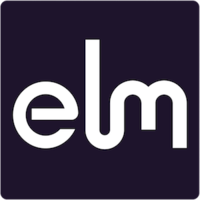Building Success, One Byte At A Time
In today's fast-paced world, where time is a precious commodity, the realm of Learning and Development has undergone a significant transformation. Enter microlearning—the hero of effective, bite-sized learning. But what exactly is microlearning?
The Concept Of Microlearning
Microlearning encapsulates the essence of learning in small, easily digestible portions. It's a departure from traditional hour-long lectures or extensive training sessions. Instead, it's about breaking down information into tiny, actionable bits, making learning more manageable, engaging, and impactful.
Evolution From Traditional Learning And The Power Of Bite-Sized Learning
Gone are the days when lengthy manuals and exhaustive courses ruled the learning space. Microlearning's rise is a testament to our changing learning needs. Learners today seek knowledge that's readily available, relevant, and quick to consume, leading to the emergence of these "knowledge nuggets."
The effectiveness of microlearning lies not just in its brevity but also in its focused delivery. It harnesses the principles of cognitive science, understanding how the brain absorbs and retains information in smaller, more digestible chunks.
Understanding Microlearning Beyond Shorter Training
In our quest to adopt microlearning, it's crucial to comprehend that it's more than just condensing training content into shorter modules.
1. Cognitive Overload And Learning Theory
Consider cognitive overload, the concept that too much information at once can overwhelm learners, hindering their ability to absorb and retain knowledge. Microlearning combats this by strategically delivering information in smaller, more manageable portions, ensuring better retention and understanding.
2. Balancing Depth And Breadth
Another critical aspect is striking the right balance between depth and breadth of information. Microlearning focuses on essential content that learners need, eliminating unnecessary details and honing in on what's crucial for immediate application.
3. Tailoring For Learner Engagement
Engagement is key. Microlearning leverages various formats—videos, quizzes, infographics, and more—to cater to diverse learning preferences, keeping learners engaged and motivated.
4. Measuring Success In Small Modules
Assessing the impact of microlearning is as critical as its creation. Metrics like engagement rates, completion times, and application rates provide insights into the effectiveness of these bite-sized units.
Chunking Content For Meaningful Learning
In the realm of microlearning, contextual chunking stands as a pivotal strategy, aligning learning content precisely with learners' immediate needs.
1. Need-To-Know Now Vs. Overall Knowledge
One of the fundamental principles of microlearning is understanding the learners' immediate needs versus broader knowledge requirements. Tailoring content to what learners need at the moment ensures relevance and applicability.
2. Understanding Immediate Relevance
The crux of contextual chunking lies in identifying what learners must know immediately for effective application in their current tasks or roles. It focuses on delivering information that directly impacts their day-to-day activities, ensuring immediate relevance and applicability.
3. Tailoring Content To Immediate Application
When designing microlearning modules, it's crucial to curate content that addresses specific pain points, challenges, or tasks learners encounter in their roles. For instance, in a customer service setting, delivering modules that focus on handling common customer inquiries or resolving issues promptly becomes paramount.
4. Strategically Prioritizing Information
Contextual chunking involves strategic prioritization of information. It differentiates between critical, need-to-know-now content versus broader knowledge, ensuring that learners receive information that aids them immediately without overwhelming them with extraneous details.
5. Enhancing Retention Through Relevance
By aligning content with immediate tasks or challenges, contextual chunking enhances retention. Learners are more likely to retain and apply information that directly relates to their current responsibilities or goals, making the learning experience more meaningful and impactful. Smaller, focused units aid in better retention. When information is presented in digestible chunks, learners are more likely to remember and apply it, leading to a more profound understanding of the subject matter.
6. Breaking Down Complexity
Microlearning involves breaking complex topics into manageable, interconnected parts. By deconstructing larger concepts, learners can grasp them more easily, ensuring a smoother learning curve.
- Practical application: Customer service training
Picture this; within a hospitality chain, contextual chunking shapes customer service training. Bite-sized modules emphasize guest interaction protocols, problem-solving techniques, and cultural sensitivity training. These tailored units equip staff with immediate skills to handle diverse guest scenarios, ensuring exceptional service delivery and guest satisfaction in real-time interactions.
Crafting Microlearning Content For Immediate Impact
One of the key strengths of microlearning lies in its ability to connect learning directly to actionable outcomes. Here's how:
1. Immediate Application Of Knowledge
Microlearning modules focus on delivering specific, actionable information. This content is designed to be immediately applicable in real-world scenarios, allowing learners to swiftly translate knowledge into action within their roles or tasks.
2. Reinforcing Learning Through Application
By incorporating practical exercises, simulations, or case studies within microlearning units, learners actively engage with the material. This hands-on approach reinforces understanding and retention, enabling them to apply the acquired knowledge in their day-to-day responsibilities.
3. Measuring Performance And Impact
Microlearning's bite-sized nature allows for precise assessment of learners' performance. Metrics such as completion rates, application rates, and performance improvements tied directly to the application of learned concepts offer tangible insights into the effectiveness of the training.
4. Encouraging Continuous Improvement
The ability to tie learning to actionable results enables a continuous improvement cycle. Feedback mechanisms incorporated into microlearning modules allow for adjustments and enhancements based on real-time learner performance and application outcomes.
- Practical application: Sales training for immediate implementation
In a sales training context, microlearning modules covering effective sales techniques, objection handling, and product knowledge tie directly to sales representatives' immediate actions during customer interactions. Application-focused scenarios or role-play exercises within these modules allow reps to practice and immediately apply these techniques in real sales conversations, leading to improved customer engagement and increased sales figures.
Practical Examples Αnd Scenarios: Microlearning Content In Action
The beauty of microlearning lies in its immediate applicability. By aligning content with actionable tasks, learners can apply newly acquired knowledge swiftly, reinforcing the learning process. Here are some examples of how microlearning can be applied for better experiences and outcomes:
Scenario 1: Sales Training On Product Knowledge At A Large Clothing Retailer
In a bustling clothing retail environment, sales associates need rapid access to updated product information, including fabric details, sizing guides, style trends, and unique selling points for various clothing lines.
- Recommended solution
Develop microlearning modules focusing on distinct clothing lines or seasonal collections. These modules could feature concise videos showcasing fabric details, size charts, style inspirations, and key selling points. Quizzes or interactive scenarios can reinforce understanding, empowering sales associates to swiftly relay accurate and enticing information to customers and enhancing their shopping experience.
Scenario 2: Compliance Training In The Hospital System
Within a hospital system, healthcare professionals and staff must adhere to stringent compliance protocols, including patient confidentiality, safety procedures, and medical ethics.
- Recommended solution
Craft bite-sized modules addressing specific compliance aspects such as HIPAA regulations, infection control measures, and ethical guidelines. These modules can include real-life scenarios, interactive simulations, and case studies that reflect the challenges healthcare professionals may face. By breaking down complex compliance standards into easily digestible units, hospital staff can better internalize and apply these crucial protocols in their daily patient care routines.
Scenario 3: Onboarding New Employees In A National-Level Insurance Company
A national-level insurance company needs an efficient onboarding process to quickly assimilate new hires into the company culture, policy nuances, and job-specific responsibilities.
- Recommended solution
Develop microlearning modules covering various aspects like company history, core values, insurance product categories, and customer engagement strategies. These modules should feature interactive simulations, brief policy summaries, and customer scenario-based learning to familiarize new employees with diverse insurance scenarios they might encounter. By offering accessible and engaging modules, new hires can swiftly grasp essential information, accelerating their integration into their roles within the company.
Tips And Tricks For Effective Microlearning Content Development
Crafting impactful microlearning experiences involves more than condensing content. It's about creating concise, actionable modules that drive immediate results. Here are key strategies to elevate your microlearning approach:
Tip 1: Interactive Learning Elements
Incorporate interactive elements like quizzes, simulations, or branching scenarios to enhance engagement and reinforce learning.
Tip 2: Mobile Optimization For On-the-Go Learning
Optimize microlearning content for mobile devices, enabling learners to access information anytime, anywhere, and on any device.
Tip 3: Leveraging Multimedia For Engagement
Diversify content formats using videos, infographics, podcasts, or animations to cater to various learning preferences and maintain interest.
Tip 4: Assessing Learner Progress
Implement feedback loops and assessments within modules to gauge learner comprehension and adapt content accordingly for maximum impact.
Tip 5: Microlearning In Context
Ensure microlearning content aligns with real-world contexts and job tasks. Practical application scenarios resonate more with learners and facilitate immediate implementation.
Tip 6: Ongoing Support And Resources
Provide supplementary resources or job aids for continuous learning support. Learners can access these resources post-training, reinforcing knowledge retention.
Tip 7: Microlearning Campaigns
Implement a series of interconnected microlearning modules. This campaign-style approach creates a learning journey, reinforcing concepts progressively for deeper understanding.
Tip 8: Real-Time Application Tasks
Include tasks that learners can immediately apply in their roles. Actionable tasks within modules enable direct application of learned skills or knowledge in their work environment.
Tip 9: Incorporating Learning Sprints
Implement short, focused bursts of learning over a specified period. Microlearning sprints keep learners engaged and motivated to complete bite-sized modules within a set timeframe.
Small Steps, Big Results: The Microlearning Revolution
In a nutshell, mastering microlearning involves understanding the nuances of delivering content in small, impactful doses. It's not merely condensing information; it's a strategic approach to cater to immediate needs, enhance retention, and drive tangible results. As you delve into the world of microlearning, keep experimenting, adapting, and measuring to fine-tune your approach. Embrace its flexibility and effectiveness in addressing modern learners' needs.


